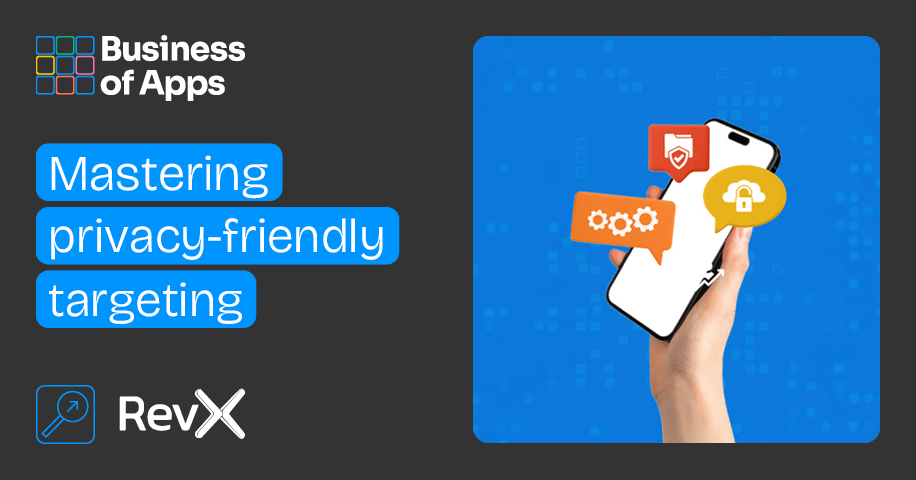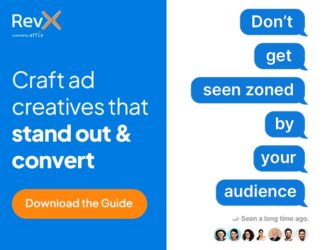Privacy has always been a crucial aspect and will continue to be a significant factor in the world of marketing. It is essential to keep privacy in mind while ensuring that brands reach the right audience.
In this article, we will elaborate on the significance of effective targeting in app marketing, explore the different privacy frameworks, and delve into strategies to achieve successful marketing campaigns.
Effective targeting in app marketing is mainly to run targeted ad campaigns that employ several different ads where each one is targeted towards specific audiences based on their preferences, responses, and trends. Achieving this requires marketers to continuously test and tweak campaigns to adapt to the requirements in order to gain the best results.
The concerns surrounding user privacy among consumers have been growing. According to a survey conducted in March 2021, 52.4% of consumers are somewhat concerned about their online privacy in comparison to previous years.
The significance of user privacy
Privacy has seen an ever-changing landscape. Moreover, privacy and customer trust are highly correlated in today’s business climate. MediaMath’s 2023 report indicated that 74% of respondents are more likely to trust brands that give importance to using personal information with a privacy-safe approach by prioritizing user privacy.
Although there is a high need for data privacy, customers also value being recognized, understood, and targeted with personalized experiences. For brands to provide these experiences to their relevant users a certain amount of non-personal user data has to be shared by the consumers—and users are consenting to this in return for a better and more personalized user experience.
Exploring the frameworks
We’ve seen several changes in the way user privacy is handled in the marketing ecosystem. One of the recent frameworks that has come into the picture is Google’s Privacy Sandbox.
Google Privacy Sandbox has two major areas of focus, namely Privacy Sandbox on Android and Privacy Sandbox for the Web.
For app marketers, the most relevant area is Privacy Sandbox on Android, so let’s dive deeper into its various aspects:
- Attribution Reporting API: Facilitates tracking ad campaign effectiveness for reporting conversions, gaining optimization tips, and detecting invalid traffic and ad fraud.
- Protected Audiences API: Allows targeting tailored, first-party audience groups for remarketing based on previous app interactions, while keeping data confidential from third parties.
- Topics API: Facilitates interest-driven advertising using interest signals derived from the user’s app usage directly on the device.
- SDK Runtime: Allows app developers to incorporate third-party SDKs, while retaining control over permissions and data access, thus preventing undesired data collection and covert tracking. This also speeds up the dissemination of SDK updates.
iOS and SKAN
SKAdNetwork or SKAN is Apple’s API and Apple’s privacy framework for ad measurement and attribution. It provides advertisers with aggregated insights without having to compromise on user privacy. This solution/framework was introduced for advertising campaigns run on iOS and Apple introduced this in May 2018.
Maximize App Growth with #1 App Store Optimization Company
Expand app store reach, increase downloads, boost engagement, lower acquisition costs & achieve higher user LTV with our leading ASO services & technology
Contact Us TodayIn April 2021, iOS 14.5 was introduced along with ATT or App Tracking Transparency Framework which was implemented as part of Apple’s privacy efforts. ATT requires users to opt in through a prompt where the user can choose if they want to share their device ID or IDFA with the app marketers or advertisers.
Strategies for effective targeting
Contextual targeting
Contextual targeting is the process of creating relevant ads and targeting these ads toward the audience that has shown interest in the topics which are applicable to the product or service offerings of a company. In the app marketing context, this is usually done by placing the ads on apps that have audiences with similar interests.
This process of targeting is considered to be one of the best ways to reach new audiences and grow the company’s target audience while boosting brand visibility and increasing conversions.
Cohort-based targeting
The concept of cohort-based targeting is to combine a group of users together that have a common identifier. This is a way to segment users that enables app marketers to target users better and helps brands provide personalized experiences to their consumers based on these common identifiers. These identifiers could include demographics, buyer behavior, descriptions, etc.
First-party data
First-party data or 1P data is one of the most valuable forms of user data as it is directly retrieved from the source (consumers) and is noted to be one of the most reliable ways to target the relevant audience effectively.
This data is collected directly by companies from their consumers on their apps through direct interactions with the consumers. First-party data can be of great use when building advertising campaigns and enables app marketers to more accurately target relevant users.
Unified ID 2.0 or UID 2.0
Unified ID 2.0 or UID 2.0 is a way to replace the use of third-party data in ad targeting without compromising user privacy. It does not depend on other technologies such as third-party cookies and enables app marketers and advertisers to set up user identity. The identifiers for this are built based on secure email IDs and phone numbers that are shared only after consent from the consumers.
Additionally, this adds to connected TV (CTV) and apps where a login is required. Overall, this helps brands maintain a valued exchange and offer a great experience to their consumers.
Conclusion
In the ever-evolving privacy world, app marketers need to become familiar with the existing frameworks and use innovation to build effective advertising campaigns that simultaneously follow guidelines and deliver results without compromising user privacy.
Despite the various privacy guidelines and frameworks which are in place to protect user privacy, app marketers can still deliver personalized and valuable experiences to their users.
This can be done by utilizing the various strategies that are in place that we discussed within this article such as contextual targeting, cohort-based targeting, effective utilization of first-party data, and probabilistic models.
RevX is an official contributor and testing partner to Google’s Privacy Sandbox. To know more about the various strategies which you can utilize to target your consumers better as app marketers reach out to our team here.
For more insights check out the blogs on the RevX website.












